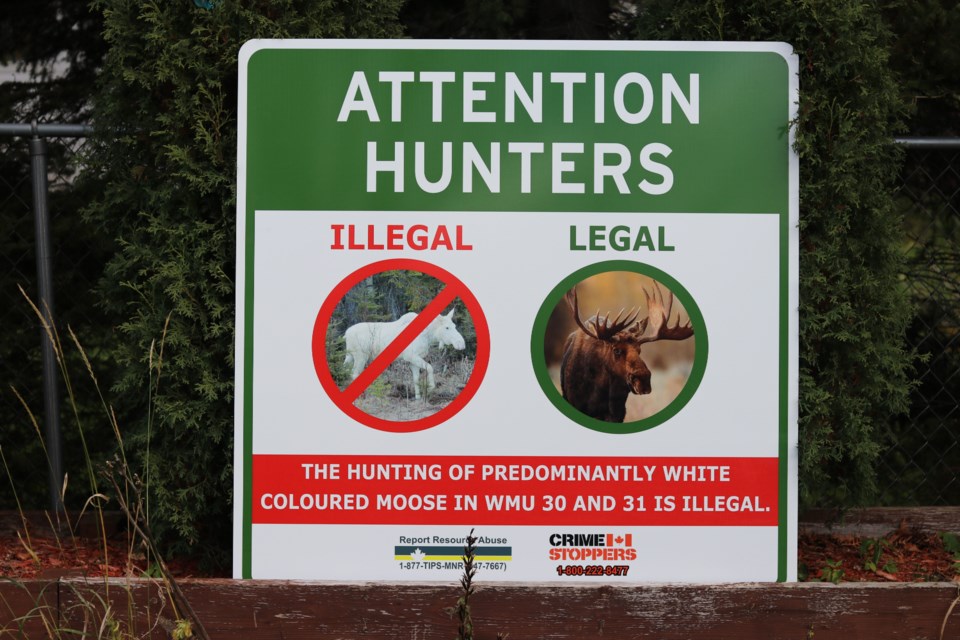TIMMINS — Troy Woodhouse’s work to educate people about the significance of spirit moose extends to the land the moose inhabit.
Woodhouse started an initiative to investigate the harvesting of a sacred white moose in 2020, including signs in the area to educate about the animals and their importance.
The six signs that are currently up around the Timmins and Foleyet area with information about white moose, their significance to the Flying Post First Nation people, and the illegality of harvesting these animals are part of a larger conversation about the safety of animal life in the area.
“We’re looking at the practices around here, and hoping they’ll ban things that harm the animals and the things they eat and our First Nations community in the area eat as well," said Woodhouse.
RELATED: White moose illegally killed near Foleyet: police
SEE: First Nation member offers $1,000 reward after 'spirit moose' illegally killed
AND: Killing of white moose was lawful, says ministry
His work has expanded into a team-up with the Stop the Spray movement, which opposes the use of unnecessary herbicides in the forests.
“We’ve changed to help the initiative to help protect their habitat,” said Woodhouse.
Working with Stop the Spray was a natural extension of the work he was already doing, said Woodhouse, as the use of unnecessary herbicides affects the moose and the people living on the land.
“That practice deteriorates the forest, the habitat for the moose,” he said. “We’re trying to bring awareness to the things that affect the spirit moose.”
Woodhouse says that a lot of the work is being done independently among members of the community living on the reserve west of Timmins, where he and other members have been working to reclaim their land.
While most of the Flying Post First Nation population is located near Nipigon in the Lake Superior region, their treaty land is located along the Groundhog River, northwest of Timmins.
White moose are seen in the area between Timmins and Foleyet, and they’ve been spotted along Highway 101 as recently as four weeks ago, according to Woodhouse.
“There’s been a couple sightings of the white moose in the last few months, with the seasons changing,” he said.
The more the animals are seen, the more conversations happen around their protection, says Woodhouse.
“I noticed people online saying ‘oh it’s a good thing they got those signs up that they can’t be harvested’,” he said. “It also raises awareness with other First Nations that the animal is important to the Kukatush band and just because you have the right to hunt, it’s unacceptable in our view because it’s sacred to us.”
